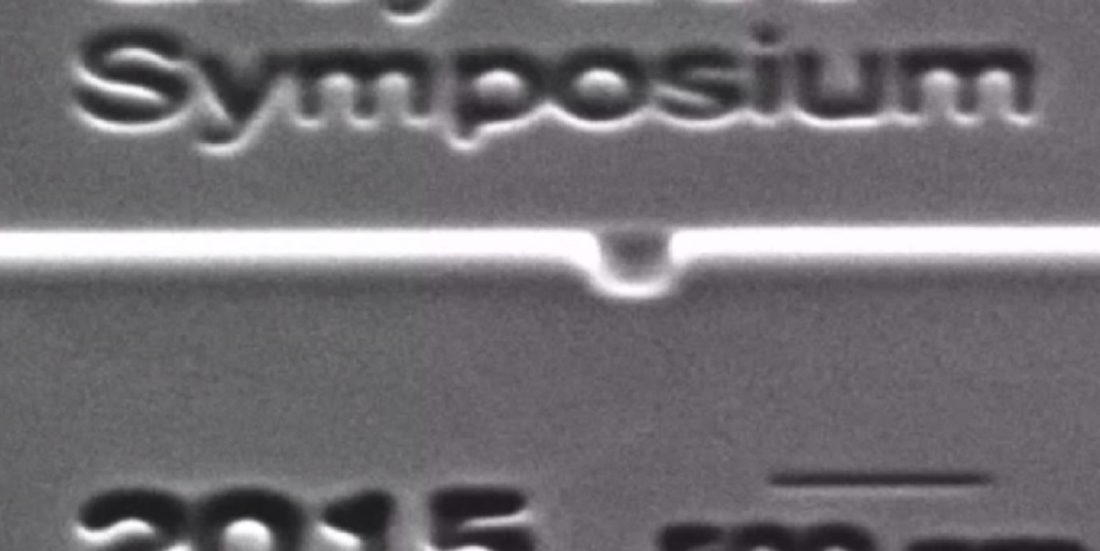Cutting nano-wire
Earlier this year, students and employees at NTNU’s Nanolab cut a 100-nanometre thick platinum wire. That’s a thickness of just one ten-thousandth of a millimetre.
PhD candidate Vidar Fauske at NTNU’s Department of Physics made a cut using focused ion beam (FIB) technology. A video of the process was presented at the Grey Goo Symposium at NTNU on 11 February.
The cut was presented as the world’s smallest wire cut.
“I’m not really able to prove that claim, however,” Fauske says.
The Grey Goo Symposium was arranged for the second time this year. The symposium gives nanotechnology students and relevant companies the chance to get to know each other, mingle, and find new ideas.
Nanotechnology is the fastest growing technology in the world. Nanotechnology researchers work with the smallest structures that can be made. At the nano-level, this means research into the atomic and molecular world. NTNU’s Nanotechnology master’s programme is one of the most difficult study programmes to gain admittance to in Norway, typically ranking right behind medical school studies.
“Grey Goo” is a hypothetical apocalypse scenario first thought up by Eric Drexler in 1986. Molecular nano-robots (dubbed grey goo) go out of control by replicating themselves and in the process consume everything on Earth. However, NTNU’s Grey Goo Symposium makes it look like everything will be OK for now, though.
The video was first published on the home page of Timini, NTNU’s nanotechnology student association. .




